Nikon AF-S Nikkor 70-200mm f/2.8G ED VR II
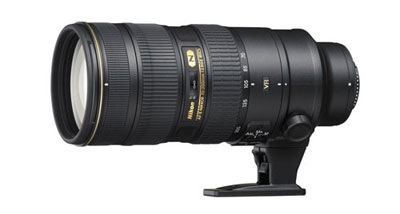 |  ePz expert Gary Wolstenholme tests Nikon's latest telezoom, the 70-200mm f/2.8 |
| The latest Nikon 70-200mm f/2.8 costs £1999 but sports many useful features including Vibration Reduction, Nano Crystal coating and internal focusing. | |
Nikon AF-S Nikkor 70-200mm f/2.8G ED VRII: Features and handling
Nikon have been regularly updating their lens range and the latest zoom to get the makeover treatment is the Nikon AF-S 70-200mm f/2.8 GII ED. The mark I version hit the shops back in 2003 so the update was long overdue.
This lens is a professional quality 2.9x zoom with a fast constant f/2.8 aperture and Vibration Reduction. It's version two of Nikon's AF-S 70-200 f/2.8 that has been eagerly awaited for some time now and is a complete redesign of this popular professional workhorse. The Vibration reduction system has been updated and promises to give an extra stop of grace over the previous version. Nikon's Nano-Crystal-Coat has also been employed in this lens, which should improve overall contrast and its resistance to flare and ghosting.
The shape of the new design is reminiscent of the older AF-S 80-200mm f/2.8, with a wide body that does not taper towards the lens mount until the tripod collar. Build quality is excellent throughout, with much of the lens being constructed of magnesium. As a result this lens is heavy. Very heavy in fact, weighing in at over 1.5kg, which is noticeably more than its predecessor. The lens is weather-sealed and designed to cope with the rigours of daily professional use in harsh conditions. Zoom and focus are performed internally and as a result the lens remains the same length at all times.
Focus is powered by a ring-type Silent Wave Motor, so focusing is lightning quick and virtually silent. In use I found it to be scarily accurate, even in challenging conditions, leaving me to concentrate on other things like composition and exposure. Minimum focus is 1.4m throughout the zoom range, which is typical of this type of lens. The focus lock buttons found on previous AF-S Nikkors of this calibre have been omitted from this lens. Opinion will be divided whether these are necessary, although I do use these on my own 70-200mm and missed them on this lens.
Although this is a heavy lens, it balances well on a my D700 with the MB-D10 grip attached and would do on Nikon's top professional bodies such as the D3s or D3x. Without the grip, the combination feels quite lens-heavy and would probably become a little uncomfortable to use over a long period. A rotating collar with a removable foot allows the lens to be mounted onto a tripod or monopod. When everything is clicked into placed and tightened up, it feels very solid and secure.
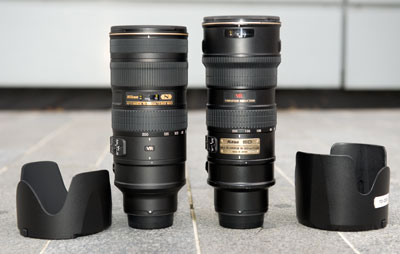 |
| The new 70-200mm and hood are on the left. As you can see, the newer lens is marginally shorter. The hood is shorter too. |
Nikon AF-S Nikkor 70-200mm f/2.8G ED VRII: Performance
For this review, the lens was tested on a 12Mp Nikon D700 using Imatest software.
At 70mm, resolution is already very good in the centre at f/2.8 and improves to excellent levels as it is stopped down. Resolution at the edges of the image also improves dramatically, and is already good by f/4. As the focal length increases, the resolution drops a little, which is typical of this kind of lens, but the drop in resolution is only slight, and the resolution is still good at 200mm. The sweet spot for sharpness seem to move as the lens is zoomed in being about f/5.6 at 70mm, f/8 at 135mm and f/11 at 200mm. At small apertures such as f/11 or smaller, diffraction starts to affect the resolution, but not devastatingly so, with the lens still performing well enough right down to f/22. Images produced by this lens have fantastic contrast, which adds to the overall impression of sharpness.
Due to the use of low dispersion glass, Chromatic Aberrations are very well controlled peaking at around 0.8 pixel widths at 135mm towards the edges of the image area. At both the long and short ends of the zoom range are of little concern and barely register 0.25 pixel widths. Most people will struggle to notice this, even if they go hunting for it.
A common criticism of this lens's predecessor is the light falloff towards the corners at wide apertures when used on digital bodies. Fall-off is still noticeable with this lens, but is improved with the far corners being just over a stop darker than the image centre at 200mm and f/2.8. By f/4 the situation is much improved and at f/5.6 any fall-off is very difficult to spot. At shorter focal lengths, Fall-off is much less of an issue, with image corners only being 0.4 of a stop darker than the image centre at f/2.8 and 70mm.
Distortion is also well controlled and will cause very few issues in most circumstances with only 0.6% barrel at 70mm and 1.5% pincushion at 200mm.
Nikon's Nano-Crystal-Coat does a sterling job of minimising flare and ghosting and the lens performs well for a design comprised of so many elements. A lens constructed of 21 elements in 16 groups would normally be an absolute nightmare for this. With a strong light source placed just out of the image, some ghosting and loss of contrast is present, but not to anywhere near the extent of the previous model. Shooting straight at a strong light source is also surprisingly ghost-free, with only a small amount of blooming around the edges of the light source.
Nikon's Vibration Reduction system has received a facelift and the new version has been implemented in this lens. I found myself able to get an acceptably sharp shot much of the time with shutter speeds as low as 1/10sec ar 200mm. I reckon this is around a stop better for me than the VR system on the older 70-200mm. Obviously this benefit will vary from person to person.As you might expect with 21 elements in its construction, this is a weighty lens. That said, balance is good – I tried it on a D700 as well as a D3S. Fit it on a D3000 or D90 and the combination will definitely be lens-weighted.
Nikon AF-S Nikkor 70-200mm f/2.8G ED VRII: Performance graphs
| Resolution results: please click on the graphs below for a larger image | ||
| Resolution at 70mm | Resolution at 135mm | Resolution at 200mm |
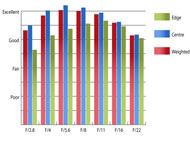 | 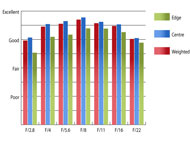 | 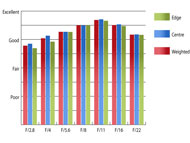 |
| Chromatic aberration results: please click on the graphs below for a larger image | ||
| Chromatic aberration at 70mm | Chromatic aberration at 135mm | Chromatic aberration at 200mm |
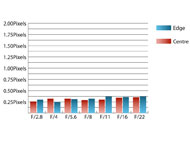 | 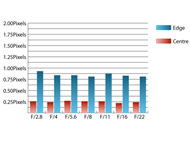 | 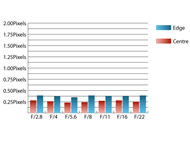 |
Nikon AF-S Nikkor 70-200mm f/2.8G ED VRII: Picture gallery
| Click on the thumbnail for a high resolution image | ||
 | 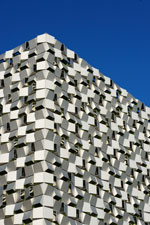 | 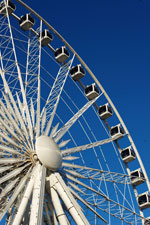 |
 |  | 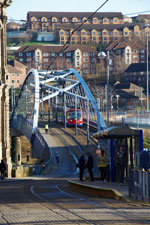 |
 | DxOMark provides objective, independent, RAW-based image quality performance data for lenses and digital cameras to help you select the best equipment to meet your photographic needs. Visit the DxOMark website for tests performed on the Nikon AF-S Nikkor 70-200mm f/2.8G ED VR II. |
Nikon AF-S Nikkor 70-200mm f/2.8G ED VRII: Verdict
Being one of Nikon's top lenses, anything short of excellent would be disappointing. Luckily, this lens does not disappoint in terms of build, image quality or any other aspect of its performance.
This lens is designed to satisfy the needs of even the most demanding photographers, and unfortunately that kind of quality comes at a price. Around £2000 to be precise. If you can't afford to compromise, then the price somehow pales into insignificance. As a professional workhorse, this lens should pay for itself.

| FEATURES |  |
| HANDLING |  |
| PERFORMANCE |  |
| VALUE |  |
| OVERALL |  |
Nikon AF-S Nikkor 70-200mm f/2.8G ED VRII: Pros
 Resolution
Resolution Low distortion and flare
Low distortion and flare Fast aperture
Fast aperture Handling throughout
Handling throughoutNikon AF-S Nikkor 70-200mm f/2.8G ED VRII: Cons
 Price
Price It's heavy
It's heavyNikon AF-S 70-200mm f/2.8 GII ED: Specification
| Focal length | 70-200mm |
| Max aperture | f/2.8 |
| Min aperture | f/22 |
| Angle of view | 34-12 degrees |
| Filter diameter | 77mm |
| Lens construction | 21 elements in 16 groups with seven ED elements, some with Nano Crystal Coating |
| No of Diaphragm blades | 9 (rounded) |
| Dimensions | 87x205.5mm |
| Weight | 1540g |
| Hood | Bayonet fit HB-48 |
| Mount | Nikon F |
Add your message
Login required
Please login here or if you've not registered, you can register here. Registering is safe, quick and free.
Please login here or if you've not registered, you can register here. Registering is safe, quick and free.
photodo Stats
1102 lenses
428 MTF tests
74 in-depth photodo reviews
100+ users join each day
Help the lens community by reviewing or rating a lens today via our lens search
428 MTF tests
74 in-depth photodo reviews
100+ users join each day
Help the lens community by reviewing or rating a lens today via our lens search
Latest Lens Reviews
- Chinon 28mm f/2.8 Vintage Lens Review
- Canon EF 70-200mm f/4L IS II USM Lens Review
- Samyang AF 85mm f/1.4 EF Review
- Sigma 70mm f/2.8 DG Macro Art Review
- Samyang AF 24mm f/2.8 FE Review
- Meike 50mm f/1.7 Review
- Tamron 70-210mm f/4 Di VC USD Review
- Lensbaby Burnside 35mm f/2.8 Review
- Asahi Super Takumar 50mm f/1.4 Review
- Asahi Super-Multi-Coated Takumar 135mm f/3.5 Review
